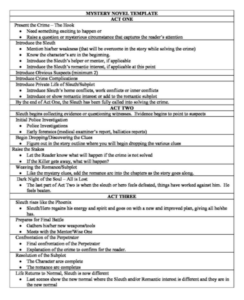THE ULTIMATE CHARACTER DEVELOPMENT WORKSHEET

MAIN CHARACTER WORKSHEET:
 When I started writing several years ago, I came across the standard character worksheet and it focused mostly on physical attributes, occupation but there was a disconnect regarding their role in the storyline, which is the most important part.
When I started writing several years ago, I came across the standard character worksheet and it focused mostly on physical attributes, occupation but there was a disconnect regarding their role in the storyline, which is the most important part.
My purpose in this blog post is share a more in depth character development worksheet. I'll go over the different parts of the worksheet with a brief explanation of the parts that need a little explanation. Most of the worksheet is self-explanatory.
The first question is: Is this a Main Character you are developing? Or Minor Character? There is a separate Minor Character Development List on the third page of the checklist. We'll begin with the Main Character development.
The following aspects of the worksheet are self-explanatory. The only prompt I will give to beginning writers is that you want to keep your writing lean. So think in terms of what background, educational and job information is crucial for the plotline of the story? That's the most important part.
THE BASICS:
- Name of Main Character
- Job/Position
- Educational Background
- Physical description - (age, body type, build)
- Relevant Background:
- What background information is needed for the story setup?
- What background information is crucial to the story itself?
THE INCITING INCIDENT:
Most plotlines need an inciting incident. This is the occurrence that happens to take the main character out of his/her normal life and into the storyline. What will this be?
Sometimes it is an incident that happens but sometimes, like in a police procedural, it's as simple as being assigned to a case. Either way, the inciting incident is what begins the actual story arc and the character arc.
TWO MAIN QUESTIONS:
- Will the character try to avoid entering the storyline? If so, how will this play out?
- What will happen in the story that will convince or make the Character agree to move forward into the storyline? What will be the inciting incident?
CHARACTER MOTIVATIONS:
 As a newbie, it took me awhile to remember that a character needs to have an arc over the storyline. So it's important -- and time saving -- to know what that arc will be before you even begin the draft. This character sheet can help you find this so you know where you are starting from and where you want to end up. The following questions should help you focus on what this character arc will be:
As a newbie, it took me awhile to remember that a character needs to have an arc over the storyline. So it's important -- and time saving -- to know what that arc will be before you even begin the draft. This character sheet can help you find this so you know where you are starting from and where you want to end up. The following questions should help you focus on what this character arc will be:
- What does the character want?
- Who and/or What is standing in his/her way?
- What fear is in the way to conquering this obstacle?
- How will the character conquer him/herself
- How will this play out over the four parts of the story?
CHARACTER ARC IN FOUR PARTS:
I write in a four-part story line as opposed to the 3 part storyline. So I break the character arc into these specific parts:
Part 1: Where does the Character Arc start out?
Part 2: How will the Character change in part 2, if at all? How will this play out in the second part of the plot?
Part 3: How will the Character change in part 3, if at all? How will this play out in the second part of the plot?
Part 4: How will the Character change in part 4? How will this play out in the last part of the story?
MINOR CHARACTER:
 For minor characters, you only need to answer a few questions. It helps to know what role these minor characters will play and what, if any, background information is needed to support them in the storyline:
For minor characters, you only need to answer a few questions. It helps to know what role these minor characters will play and what, if any, background information is needed to support them in the storyline:
- Name
- Role in Story
- Any background that is needed to move the story forward?
- How will you add background or character traits of this minor character?
- Will there be any character arc?
- If so, what is it in one sentence?





